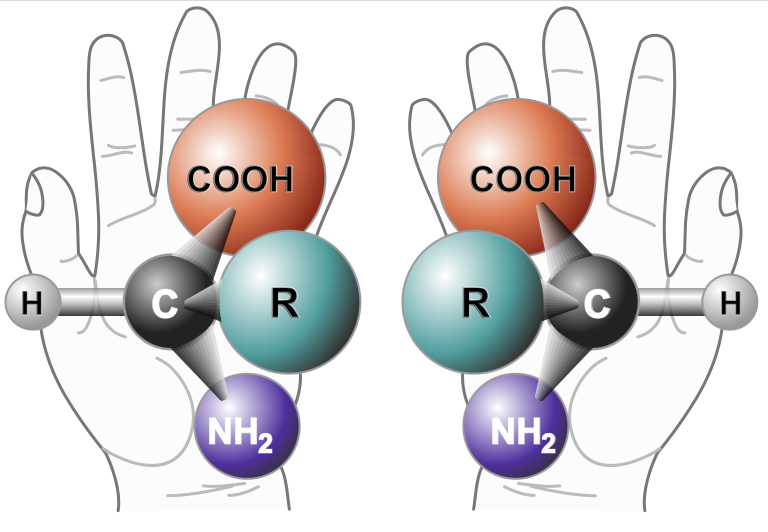Holding a mirror to life’s key molecules

Enlarge / The left- and right-handed forms of an amino acid. Every living thing uses the left-handed form exclusively. (credit: Wikimedia Commons)
The central dogma of molecular biology holds that DNA gets transcribed into RNA, which then gets translated into proteins. Of course, there are exceptions-some viruses, like coronaviruses, forego DNA altogether and encode their genetic information in RNA genomes. Other viruses, like HIV, have RNA genomes that must be copied into DNA and then transcribed back into RNA before being made into proteins. But as a general rule, "DNA to RNA to protein" describes how information moves within cells.
A unique property of biological molecules is that they have handedness. Naturally occurring molecules occur in roughly equal mixtures of left- and right-handed varieties. This means that molecules can have identical atoms and shapes but cannot be superimposed one upon the other. Instead, they are mirror images of each other, like our right and left hands.
(This can be difficult to envision, which is why pre-meds taking organic chemistry in college spend so much time playing with those ball-and-stick molecular models.)
Read 9 remaining paragraphs | Comments